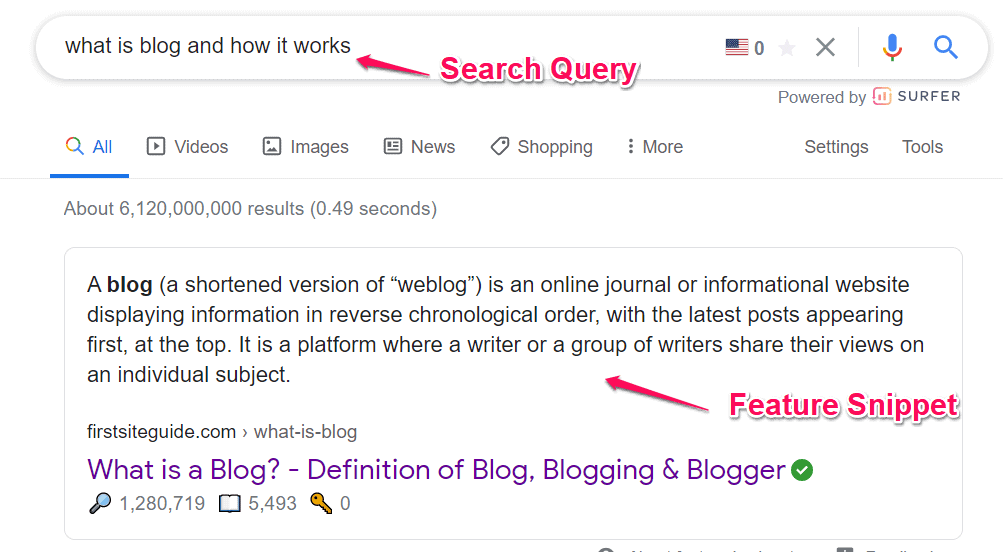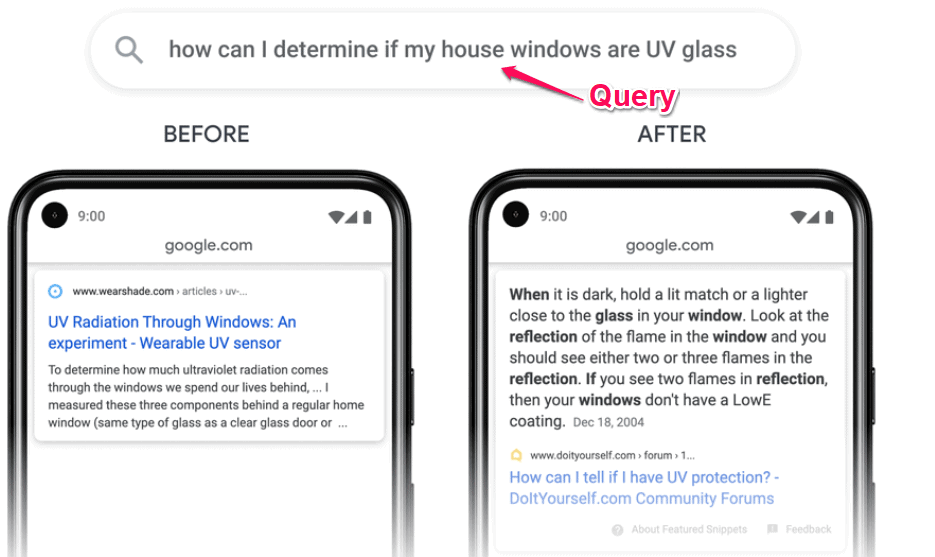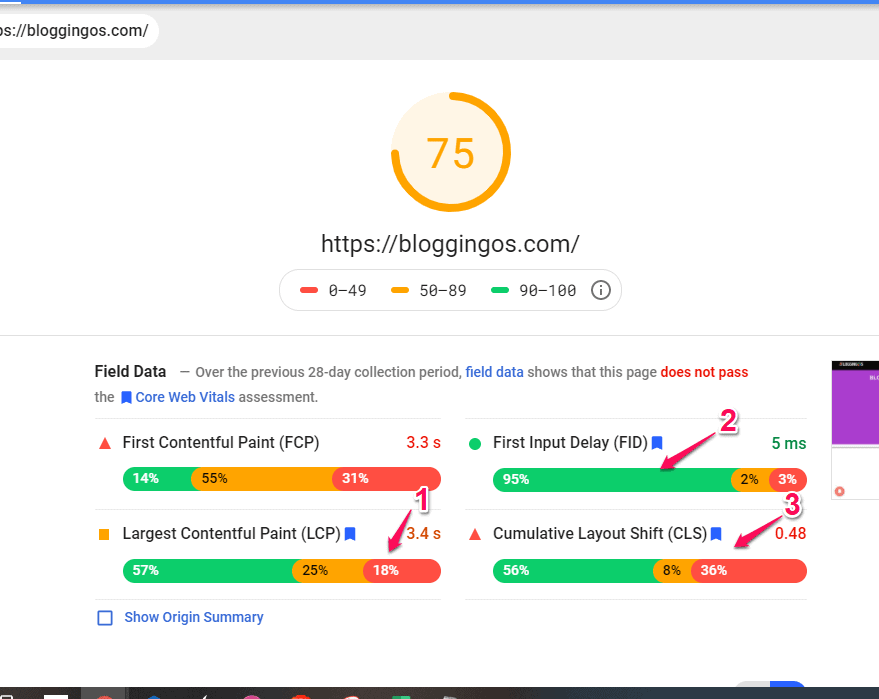
Writing a blog post full of texts or images will not be enough to grow your blog in the coming future SEO updates.
The old school strategy to increase the length of the content, target specific keywords, and optimize around a specific topic will not improve the ranking or organic traffic.
Hence i decided to share some major updates in Google SEO, which will be the future of SEO and can help grow your blog.
Well, this guide will change your way of writing content as i will be revealing some awesome tips which you can use to twist existing or old content to improve the SEO ranking.
Let's without any more hassle, i will drop all the major tips to Grow your blog.
Must Read : How to start a successful blog
What Are the Future SEO Techniques to Grow Your Blog
This guide is purely designed to get aware of what Google is bringing new changes in indexing and ranking to show better results.
Hence it covers the major highlights and suggestions on how you should twist your website and its blog posts to get its advantages.
So keep eye on this article and mark this as a bookmark as i will update the same in the future as soon as i found something which is worth adding in future updates.
#1 : Optimize Content for Search Intent- BERT Algorithm
Till the time we were focusing on the exact keywords and their potential search volume and try to use the same keywords multiple times as part of on-page SEO, and that was nothing wrong.
But in the first week of Oct 2019 Google has introduced its BERT (Bidirectional Encoder Representations from Transformers) algorithm which understands search better than before.
Just take an example, let's we have two keywords "One third of Six" and another keyword "Quarter to six".
Earlier it was much difficult for Google to understand that in the first keyword you are looking for the outcome as number Two (6/3) however in other you were looking for 5:45 (in reference to time).
But in both cases it might be showing either wrong or correct results.
This problem is mainly because earlier Google AI was unable to differentiate between the "of" and "to" two different words and their context.
Now with BERT Google is capable of understanding clearly and it reads the context of the complete query reading both before and after the keywords to understand the exact meaning for the search.
Along with, BERT is the reason Google now suggesting. do you mean below your search if it found you are tying wrong.

Isn't it interesting?
This proves that now Google understanding more than before so find the search intent and write blog post accordingly instead of pouring any random text with reference to exact keywords.
I already explained in detail, how to rank website #1 in Google improving various tips.
Well for a more detailed understanding of BERT, you can follow this detailed guide published by Google itself.
If you found this interesting scroll down much more awaited there.
#2: Optimize Content for the Feature Snippet
If i would say, that to rank your website you need to optimize your complete content around a particular keyword then it will be a much tough job to rank #1 in Google.
But it might surprise you that if you optimizing your content for feature snippets then even you can rank above the high authority websites, so why can't you focus on feature snippets?
But i am sure you are curious to know more about feature snippet?
What is Feature Snippet?
While you search in Google for a specific keyword and you found a little box in the top even before the organic results with a brief answer summary either in text, list, or table format of your asked query is known as feature snippet.

In the above screenshot, you can see how Google extracted a short description of the asked query from the millions of blog posts.
But this snippet could be of different types for different queries such as.
Earlier the post which got feature snippet was also getting #1 ranking in the organic search but in the 22 Jan 2020 feature snippet update they have changed it.
That then onwards the same result will not be shown in the top 10 organic searches for which any website already got feature snippet.
Well, feature snippets will give you more traffic or not that still under discussion as the study done by Ahref in 2017 says getting feature snippets will have less traffic as compared to #1 organic search result.
But i am sure it depends on the types of the snippet as it always increases CTR.
Now let me give you a few tips on how you can optimize your content to get feature snippets in the Google search.
How to Get Text type Feature Snippet?
To get text feature snippet, if possible write a summary of the answer at the beginning of the article itself and that paragraphs should have at max 20-70 words and less than 250-300 characters.
How to Get Tabular Featured Snippet?
For tabular snippet have a table in your article which should not have rows more than 4-5 as Google never displayed anything more than that.
How to Get list type feature snippet?
For list snippets always try to write content around the "How to" topics and make a list in either H2 or H3 tags and should have an average of more than 6 lists.
How to Get video type feature snippet?
For video, snippets try to have video content longer than 6-7 min and optimize around the proper keywords in the title, tag and description.
To learn more on feature snippet here is an exclusive case study done by the SEMRush, i thought this might be helpful for you.
Are you learning something new? If so i am expecting you to share this guide before you read forward.
#3: Optimize Content for Passage Indexing
The old school strategy to write content about a particular topic and was only ranking if you optimized around one topic will now no more be criteria for ranking.
Google has recently in Oct 2020 has announced that with a better understanding of the content, in the future not only a complete website but even a small paragraph will be rank in the search result.
What is Passage Indexing?
Passage Indexing is not a Google Core algorithm neither it is any indexing mechanism but it is more of finding relevant answer paragraph from a post that answers user query and ranks it higher in the search engine.
Even the complete post is not optimized for the same query.
So you don't need any separate optimization for the passage indexing but need to answer the particular query within the content to get it rank for any specific query.
Passage Indexing is one of the major updates Google is about to roll out and around 7% of the overall search engine ranking will be impacted with passage indexing.
Here is an example of the Passage Indexing.

When somebody searches for a specific query, that his window is having UV glass or not then earlier Google showed a page which was completely optimized around the same topic.
But after the passage indexing rolled out even the complete post was about UV protection but within that article, Google found 1 paragraph answering user query and it got ranked.
So now onward, you have higher chances of ranking if you write your content for the passage indexing.
How to Optimize for Passage Indexing?
You can optimize content for passage Indexing by making sure your complete content is structured into a clear heading and subheadings.
Also, write the subheadings in such a way that they are answering the particular query.
So don't mess much with your existing content but you can alter the subheading of your existing content if you want to get an advantage for passage indexing.
Well, if you need more understanding of the same i strongly recommend you to view the suggested video at the top of this guide.
#4 : Optimize Website for Core Web Vital Update
Google has officially announced that the Core web vital will be a deciding factor in the future ranking of the web pages.
Currently, Google has existing search engine ranking signals such as
But Core web vital is a new edition in this existing ranking signals, where three more factors will be added to improve the user experience and offer the best quality content.
Now if you are curious what these three and how you can get this score then the easiest way to get this score is Google page speed Insights.
Enter your domain name and find the results, there you have different scores displayed.
What is LCP ? : Time takes to display the largest content of your website mainly images or text.
What is FID ?: Time takes to display the first content of your website including everything.
What is CLS ?: It is the sum of how many times the images or anything suddenly appears or shifts from its initial location.

Now if you are curious to know what will be the best score for the same then this web dev guide as detail summary on each types with its good, impressive and poor time frames.

In Google page speed insight, you can insert each URL and get the score for each but it will be a headache, so why can't you use the Webmaster tool itself as it already added the same.
Login Google search console> Go to Enhancement>Click to Core Web Vital > Open Report for Desktop/mobile.

If you will click on Poor, it will show a list of URLs that need improvement.
But what needs to improve is mainly what you can get from the Google Page insights.
How to fix Core Web Vital Issues?
Search the URL in Google page speed insight and look for the suggested improvements which are mainly due to high-resolution images, so compress them using plugin ShortPixel or any web browser.
If the issue with the text mainly in the heading and subheadings then reduce the font size and in such a way you can better optimize the core web vital issues and all your URL should be in good condition instead of poor.
Even for the mobile version, you can use the AMP that improves the page experience and can fix most of the Core web vital issues.
To learn more on the Core Web Vital, i advise you to go through the detailed guide published by Backlinko.
#5: Optimize for Mobile First Indexing
Since 2015 Google has identified that mobile searches have surpassed desktop searches and at the moment around 60-70% of searches are coming from mobile devices.
Google after doing a vast experiment, finally rolled out Mobile-first indexing in the year 2018 and going forward only the mobile version of the site will be indexed and displayed in search results.
Well, i am sure that now you are thinking about how it is different than before?
What is Mobile First Indexing?
Earlier the websites were indexed based on the desktop versions and that is what the reason Google were displaying the desktop version in both mobile and desktop.
But with Mobile first indexing the mobile version of the website will be used by Google to index the website pages and if that are relevent and as expected then will displayed in the search engine.
But of course, if the site was not optimized for the mobile version then the user experience was very bad on the mobile and you might lose the search engine ranking.
But if you are already serving two versions of the same website each for both Mobile and Desktop.
Then make sure the content in both should be the same and even the meta tag and data structure should match with each other.
Else if your mobile version has a lack of information than the desktop version then only the mobile version will be considered for the ranking and you might lose potential traffic in the search engine ranking.
But if you only have a desktop version of the site, not a mobile version then even the new Google crawler bot "Google smartphone" will index it.
How to optimize Site for Mobile-First Indexing?
Well if your site is already serving accurately in both mobile and desktop view as a responsive site then you don't need any changes.
If not then it is mainly due to the theme you will be using and here my recommendations would be to use the lightweight and SEO-friendly responsive theme GeneratePress (Read complete Review).
Besides, make sure your site is verified for both mobile and desktop versions of sitemap in Google webmaster if you have two different versions else ignore them.
How do I know if my website is Mobile first indexing?
Start from July 2019 all the new sites are enabled default for the mobile-first indexing but the older sites are still under migration.
If you want to check your site is migrated or not then follow the below steps.
Login to search console> setting > check the Aboutsection > Check Indexer Crawler.

If it is Googlebot Desktop then still not migrated and if Googlebot smartphone then migrated.
So start to optimize your site for mobile indexing and improve the user experience by improving the website loading speed,reducing bounce rate and removing any popup ads by Adsense etc.
For website or blog speed, hosting and theme are key criteria and you can read an exclusive guide on the best web hosting provider for a better user experience.
Wrap up on How to Grow Your Blog with Future SEO
It is time to focus more on the better user experience and if possible use the balance ads on the website to avoid any unnecessary popups you can try Ezoic (Review guide).
Major Core web vital issues can be fixed optimizing the imges size below 60-70 kb and reduce the header texts size less than 20.
If possible switch to the better hosting provider for wordpress site and my recommendations would be to go with Hostinger if the budget is lower than $30 else A2 hosting for closely $100/year budget.
You don't need separate optimization for the passage indexing but if possible always try to focus on list posts or how to type content to get more feature snippets.
I am sure i added some value and simplified the major Future SEO changes to your great writing experience which help to grow your blog
I am sure, i added some value and simplified the major Future SEO changes to your great writing experience which will definitely help to grow your blog, so now it's your turn.
Now it's Your Turn
If you found the content and my research helpful then feel free to share this guide as much as possible with your social community including friends and family. Thanks in advance.
Frequency Asked Question
Q1 : How do you write feature snippet?
Ans: Feature snippet is part of the blog post only but the suggested way to get feature snippet is to write the summary of the query-answer in the beginning 500 words only.
If possible, follow the answer soon after the query or question and focus on context clearly before and after the answer.
Q2 : Is Passage Indexing a Google Core Update?
Ans: According to Jon Muller the Passage indexing is not a Google core update but it is more of a ranking factor. But it is going to impact the 7% overall searches.
Q3: Why are featured snippets important?
Ans: Feature snippet only looks for the relevant answers, so even the actual website ranking somewhere in the top 100 or even more can also have a chance to get the top position in the organic search.
Hellow, kirtish I have been learning blogging from your channel for past one month..I was really appreciating you content on youtube and today I am amazed to know that you belong to same place from where I am.
How can I contact you further for blogging help
Hey Thanks, Rashi, you connect me over email or Instagram.
You’re awesome. Thanks for sharing!!
Thanks for your feedback
Bro. noofollow Backlink. increase Domain Rating?
No, but build them as well